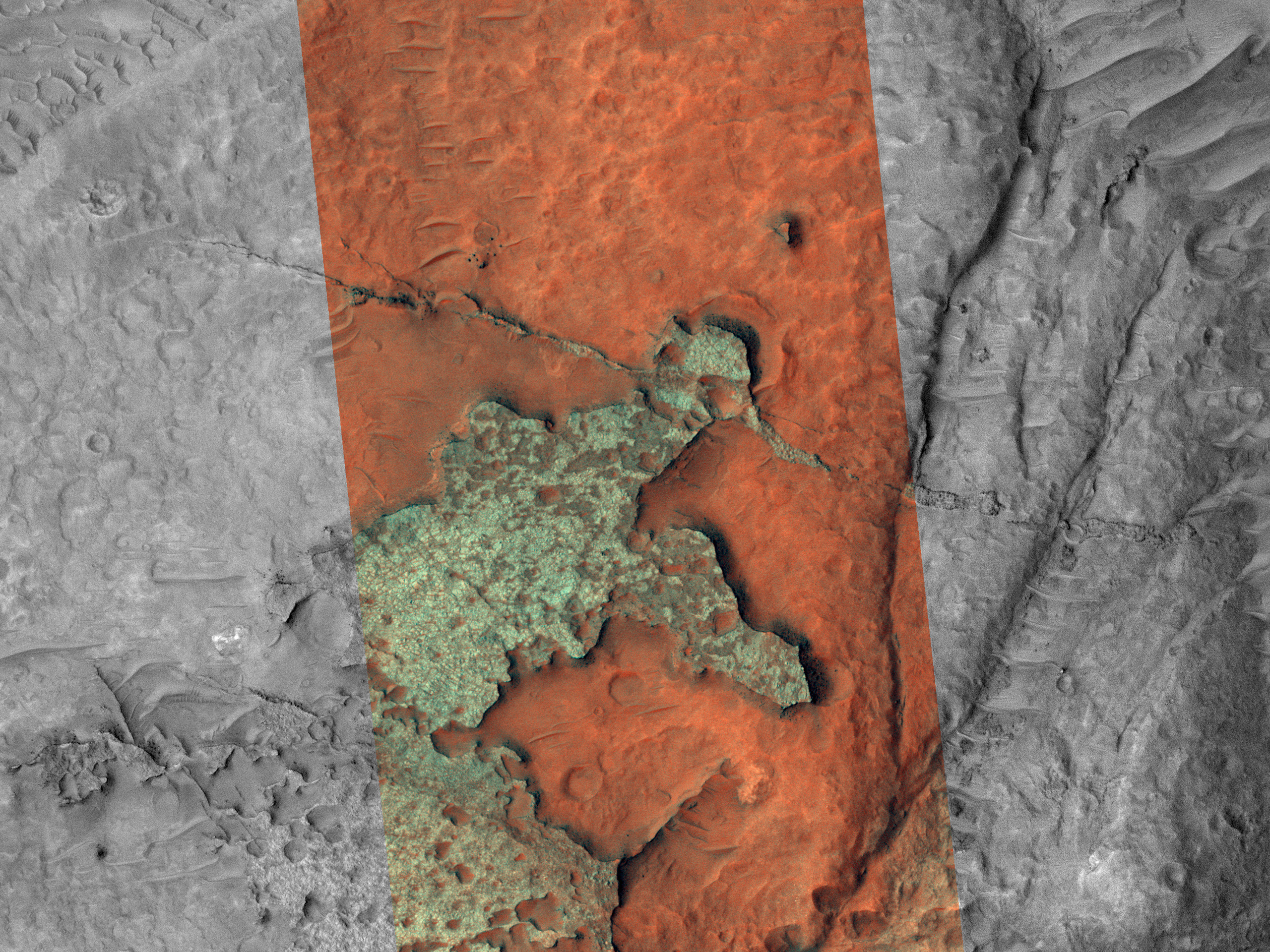This image shows the interior of a crater located in Margaritifer Terra with a complex geologic history.
In an enhanced color closeup, we see what might be evidence of intrusive volcanism forming the blue-toned linear feature (also known as a dike, where magma was squeezed vertically in a crack) and a wider area where the magma was able to spread horizontally (called a “sill” by geologists.) Intrusive rocks form when magma forces itself through other rock layers, following paths of least resistance. ( For scale the false-color region is about 550 meters wide or 5 football fields, including end zones.)
Often these intrusions occur between emplaced rock layers or following faults and fractures. We can tell that these features are younger than the surrounding and underlying material due to the cross-cutting relationship with the small impact crater. The intrusive rock appears more blue in this false-color image either because it is less dusty or it has a more mafic composition. Alternatively, the feature could be some other kind of sedimentary rock unit or impact melt.
ID:
ESP_085164_1620date: 26 September 2024
altitude: 261 km
https://uahirise.org/hipod/ESP_085164_1620
NASA/JPL-Caltech/University of Arizona
#Mars #science #NASA
